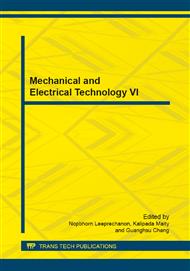p.261
p.267
p.273
p.278
p.283
p.288
p.292
p.298
p.303
Gain-Scheduled Control Approach by Logarithm Transformation for Electrical Vehicle Traction Force Control
Abstract:
This paper proposes an approach by logarithm to evaluating the electrical vehicle traction force control directly instead of the slip ratio measurements. Utilizing the built character database of the driven motor, or so-called current-RPM-torque database, a gain-scheduled approach by logarithm transformation is developed to provide the appropriate traction force while one traction wheel of the vehicle is traveling into different road surface. An illustrated simulation with a scenario close to real situation is also given to show the feasibility to evaluate and control the traction force through the database of the motor.
Info:
Periodical:
Pages:
283-287
Citation:
Online since:
August 2014
Authors:
Price:
Сopyright:
© 2014 Trans Tech Publications Ltd. All Rights Reserved
Share:
Citation:


